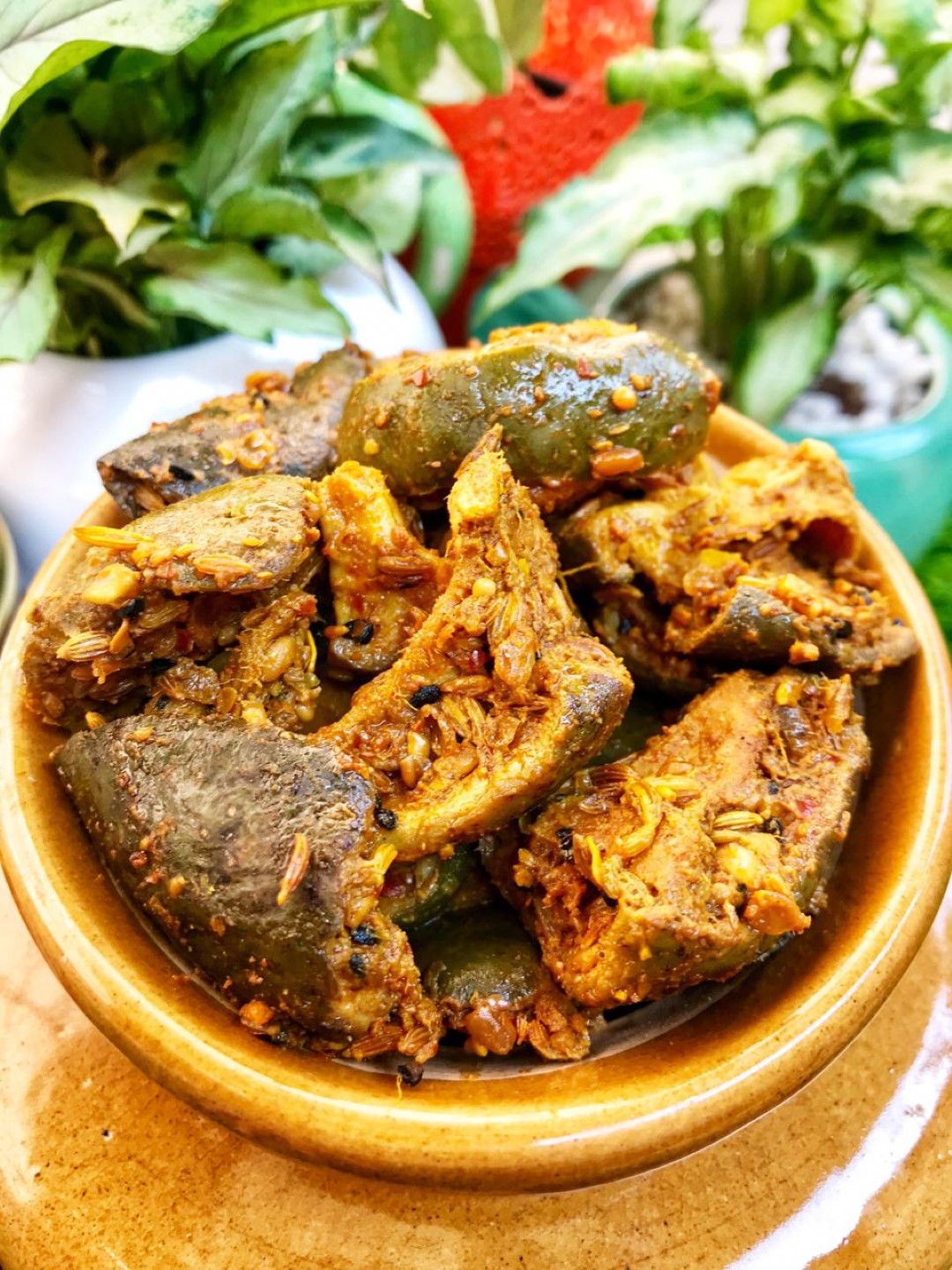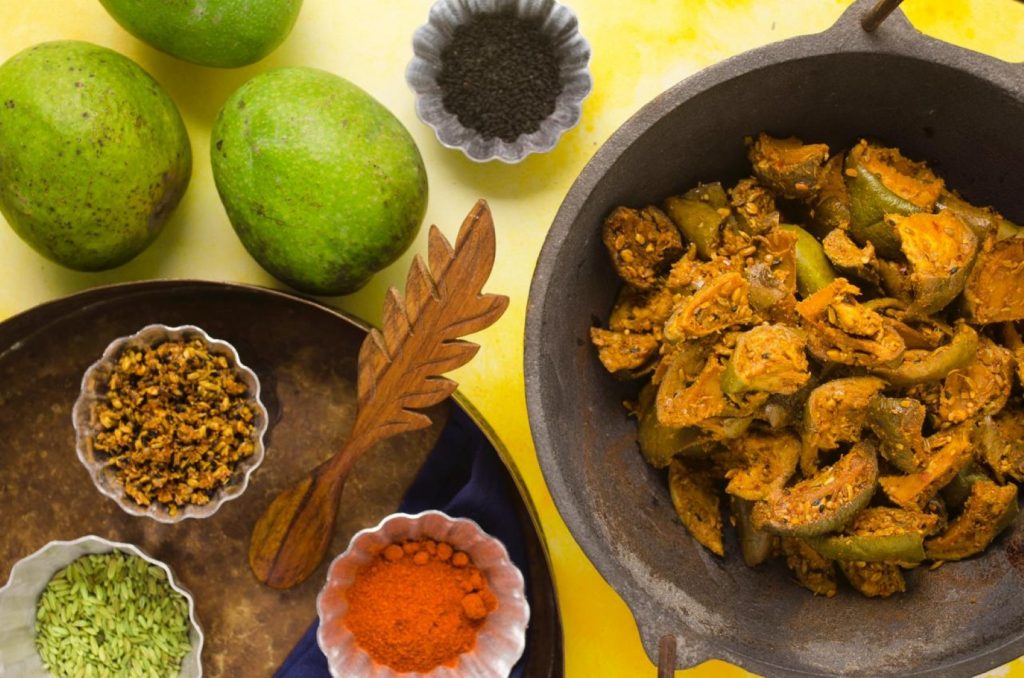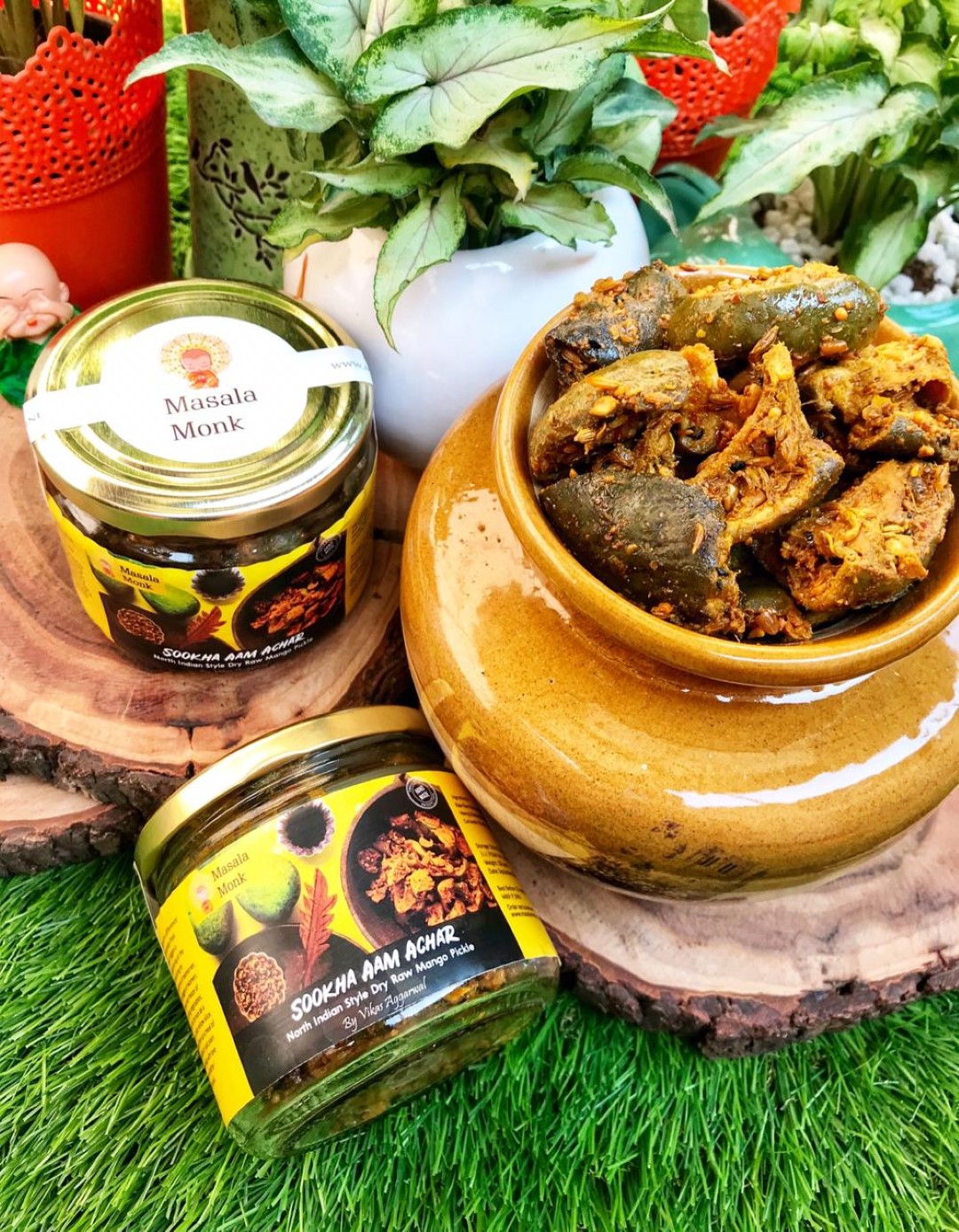
Mango pickle, known as ‘Aam ka Achar’ in Hindi, is a staple in many South Asian households. Its tangy and spicy flavor profile makes it a favorite accompaniment to a variety of dishes. But beyond its taste, mango pickle has been touted for its potential health benefits. Let’s explore the journey of this culinary delight and its implications for health.
1. The Origin and Making of Mango Pickle:
Mango pickle has its roots deeply embedded in South Asian culinary traditions. For centuries, it has been a method to preserve the goodness of mangoes beyond their seasonal availability.
A. Traditional Preparation:
The process begins with selecting raw, green mangoes. These are then washed, dried, and cut into slices or chunks. The mango pieces are mixed with a variety of spices, including:
- Fenugreek seeds (Methi): Known for their digestive benefits.
- Fennel seeds (Saunf): Often used for their aromatic flavor and digestive properties.
- Turmeric powder: Offers a vibrant color and is known for its anti-inflammatory properties.
- Red chili powder: Adds a spicy kick and is believed to boost metabolism.
The spiced mango mixture is then combined with mustard oil, which acts as a preservative and enhances the flavor. The mixture is stored in ceramic or glass jars and left to ferment in sunlight for several days. This fermentation process not only develops its unique taste but also introduces beneficial bacteria, giving the pickle its probiotic properties.
2. Health Benefits of Mango Pickle:
While mango pickle is primarily consumed for its taste, it offers several health benefits when included in moderation.
A. Digestive Health:
The spices used in mango pickle, especially fenugreek and fennel seeds, are known to promote digestion. They stimulate the release of gastric juices, aiding in the breakdown of food.
B. Probiotic Properties:
The fermentation process introduces beneficial bacteria into the pickle. These probiotics can promote a healthy gut flora, aiding in digestion and potentially boosting immunity.
C. Vitamin C Boost:
Raw mangoes are rich in Vitamin C, an essential nutrient known for its immune-boosting properties. Regular consumption can enhance the body’s natural defenses against common illnesses.
D. Anti-inflammatory Benefits:
Turmeric, a key ingredient in mango pickle, is known for its anti-inflammatory properties. This can be beneficial for individuals with inflammatory conditions like arthritis.
3. Mango Pickle and Weight Management:
Mango pickle, with its rich flavor profile, can be a delightful addition to a meal. But how does it fare when it comes to weight management?
A. Caloric Content:
While the primary ingredient, mango, is low in calories, the added spices and oil can increase the caloric content of the pickle. However, since it’s consumed in small quantities, it doesn’t significantly impact daily caloric intake.
B. Metabolism Boosting Properties:
The spices, especially red chili powder, are believed to have a thermogenic effect on the body. This means they can temporarily boost metabolism, aiding in calorie burning. However, the effect is minimal and should not be solely relied upon for weight loss.
C. Role in Appetite Regulation:
The tangy and spicy nature of mango pickle can enhance the flavor of a meal, potentially leading to increased satiety. This can help in portion control and prevent overeating.
4. Considerations and Potential Side Effects:
While mango pickle offers several benefits, it’s essential to consume it in moderation and be aware of potential concerns.
A. Sodium Content:
Mango pickle can be high in salt, which acts as a preservative. Excessive salt intake is linked to hypertension and other cardiovascular issues. It’s crucial to balance out the day’s meals if mango pickle is part of your diet.
B. Quality of Oil:
The type and quality of oil used can impact the health benefits of the pickle. Traditionally, mustard oil is used, which has its own set of benefits. However, if adulterated or low-quality oil is used, it can negate the health benefits.
C. Overconsumption:
Due to its delicious taste, it might be tempting to consume mango pickle in large quantities. However, due to its caloric content and high sodium levels, it’s best enjoyed in moderation.
D. Allergies and Sensitivities:
Some individuals might be sensitive to the spices used in mango pickle. It’s essential to be aware of any allergies or sensitivities and adjust consumption accordingly.
5. Incorporating Mango Pickle in a Balanced Diet:
Mango pickle can be a flavorful addition to various dishes. Here are some ways to include it in a balanced diet:
- As a side dish: A small serving of mango pickle can complement a meal of rice, lentils, and vegetables.
- In sandwiches and wraps: A spoonful of mango pickle can add a tangy twist to your regular sandwiches or wraps.
- Salad dressing: Mix a bit of mango pickle with yogurt to create a spicy salad dressing.
Conclusion:
Mango pickle, with its rich history and flavor, is more than just a condiment. Its potential health benefits, coupled with its delightful taste, make it a favorite in many households. However, like all foods, it’s essential to consume it in moderation and as part of a balanced diet. Whether you’re enjoying it with a simple meal or experimenting with it in various dishes, mango pickle is sure to add a burst of flavor and a touch of tradition to your plate.
FAQs about Mango Pickle:
- What are the primary health benefits of mango pickle?
Mango pickle is rich in antioxidants, aids in digestion due to its probiotic content, and can potentially boost metabolism because of the spices used. It also offers a unique flavor that can enhance appetite and satiety. - How does mango pickle impact weight loss?
While mango pickle itself isn’t a weight loss food, its spices can have a thermogenic effect, slightly boosting metabolism. Its rich flavor can also increase meal satisfaction, potentially aiding in portion control. - Is there a concern about the sodium content in mango pickle?
Yes, mango pickle can be high in salt, which acts as a preservative. It’s essential to consume it in moderation and balance out sodium intake throughout the day. - What type of oil is best for making mango pickle?
Traditionally, mustard oil is used, which has its own health benefits. However, the quality of oil is crucial. Ensure that the oil is pure and unadulterated to reap the maximum benefits. - How can I incorporate mango pickle into a balanced diet?
Mango pickle can be used as a side dish, added to sandwiches and wraps, or even mixed with yogurt to create a spicy salad dressing. - Are there any potential side effects of consuming mango pickle?
Overconsumption can lead to excessive sodium intake. Additionally, some individuals might be sensitive to the spices used, so it’s essential to be aware of any allergies or sensitivities. - Does mango pickle have probiotic properties?
Yes, the fermentation process in making mango pickle can introduce beneficial bacteria, giving it probiotic properties that aid in digestion. - How does mango pickle compare to other pickled foods in terms of health benefits?
While the base ingredient differs, the fermentation process and spices used in various pickled foods offer similar benefits, such as aiding digestion and providing antioxidants.
Blog Tags:
Mango Pickle, Health Benefits, Weight Management, Probiotic Foods, Traditional Condiments, Fermented Foods, Dietary Sodium, Balanced Diet, Mustard Oil, Indian Cuisine.












